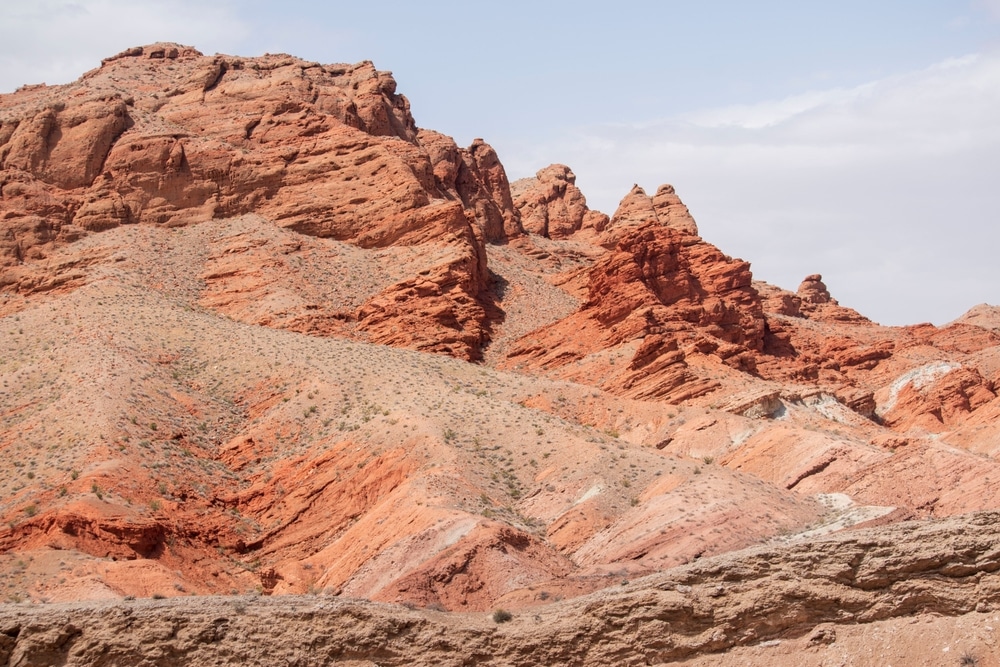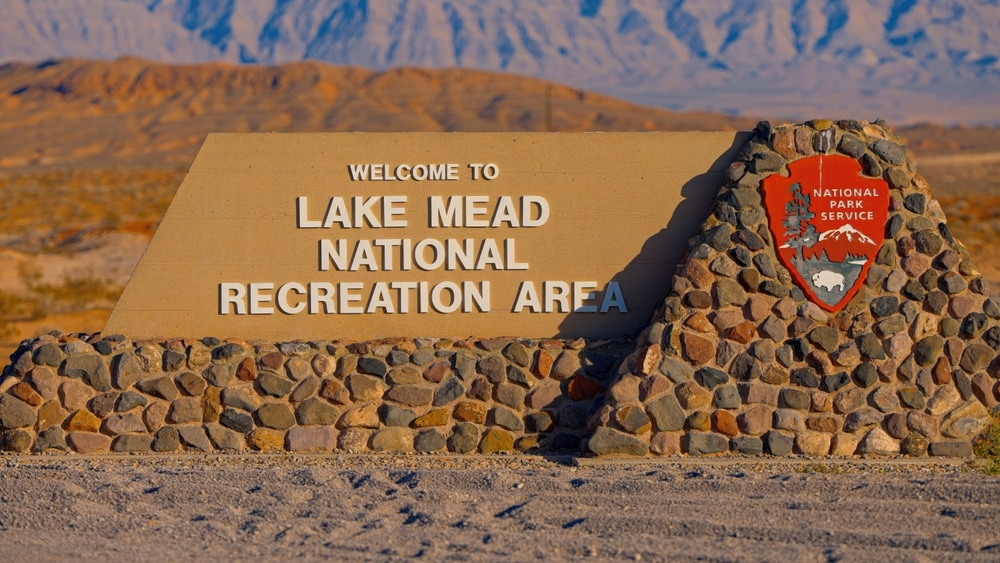In the arid landscape of northwestern Arizona, where desert sands and rocky outcrops dominate the terrain, Lake Mead National Recreation Area emerges as a striking contrast – a vast expanse of azure waters surrounded by rugged mountains and colorful desert scenery. Straddling the Arizona-Nevada border, Lake Mead represents one of the most significant and diverse recreational resources in the American Southwest.
Created by the construction of the Hoover Dam on the Colorado River in the 1930s, Lake Mead is America’s first and largest national recreation area, encompassing 1.5 million acres of water and land. The Arizona portion of Lake Mead offers visitors a remarkable blend of outdoor activities, from water-based recreation to hiking, wildlife viewing, and cultural exploration.
The significance of Lake Mead extends far beyond recreation. It serves as a critical water source for millions of people across the Southwest, supports diverse desert and aquatic ecosystems, and stands as a testament to one of America’s greatest engineering achievements. The area also holds deep cultural importance, with a human history stretching back thousands of years through Native American civilizations, pioneer settlements, and modern development.
This article explores the many facets of Lake Mead National Recreation Area within Arizona, providing essential information for visitors while highlighting the area’s natural wonders, recreational opportunities, and conservation challenges.

Lake Mead National Recreation Area has a rich history tied to the construction of the Hoover Dam and the creation of Lake Mead. Visit the park’s Visitor Centers, including:
Lake Mead’s dramatic landscapes of turquoise waters, red rock canyons, and desert vistas offer endless opportunities for photography. Capture:

Lake Mead and Lake Mohave are perfect for boating and water-based activities. With over 1.5 million acres of water and surrounding desert, visitors can enjoy:

Fishing is a popular activity at both Lake Mead and Lake Mohave, with opportunities to catch:

Lake Mead National Recreation Area offers a variety of hiking trails through desert landscapes, canyons, and along scenic shorelines. Popular trails include:

One of the most iconic landmarks in the region, the Hoover Dam, is located on the western edge of Lake Mead. Highlights include:

Lake Mead’s diverse ecosystems support a variety of wildlife. Keep an eye out for:

The calm coves and inlets of Lake Mead and Lake Mohave are perfect for kayaking and paddleboarding. Explore scenic spots such as:

Take in the beauty of the desert and the lakes on a scenic drive through the recreation area. Popular routes include:
With its remote location and minimal light pollution, Lake Mead National Recreation Area is an excellent spot for stargazing. Popular camping areas like Temple Bar and Willow Beach are perfect for laying out a blanket and enjoying the night sky. On clear nights, you can see the Milky Way, constellations, and even meteor showers.

| Category | Details |
|---|---|
| Location | Southern Nevada and northwestern Arizona, near Boulder City, Nevada |
| Established | October 13, 1936 |
| Managed By | National Park Service |
| Size | Approximately 1.5 million acres (607,000 hectares) |
| Main Attractions | Lake Mead, Lake Mohave, Hoover Dam, Black Canyon, and scenic desert landscapes |
| Bodies of Water | – Lake Mead: The largest reservoir in the U.S.- Lake Mohave: A smaller reservoir below Davis Dam |
| Ecosystem | Mojave Desert with rugged mountains, canyons, and desert flora |
| Wildlife | Includes bighorn sheep, coyotes, lizards, migratory birds, and fish species like striped bass and catfish |
| Recreation Activities | Boating, fishing, swimming, kayaking, hiking, camping, and wildlife viewing |
| Popular Areas | – Boulder Beach: Swimming and picnicking- Willow Beach: Fishing and kayaking- Black Canyon Water Trail: Paddling through scenic canyons |
| Nearby Landmarks | Hoover Dam, Las Vegas, Grand Canyon-Parashant National Monument |
| Trails | Popular trails include the Historic Railroad Trail and Goldstrike Hot Springs Trail |
| Climate | Hot summers (often exceeding 100°F), mild winters, and low rainfall |
| Camping | Developed campgrounds (e.g., Boulder Beach Campground) and dispersed camping allowed |
| Accessibility | Visitor centers and some trails are wheelchair accessible |
| Entrance Fee | $25 per vehicle (valid for 7 days; fees subject to change) |
| Fun Fact | Lake Mead was formed by the construction of Hoover Dam on the Colorado River and supplies water to millions of people in the Southwest! |
The Arizona portion of Lake Mead National Recreation Area occupies the northwestern corner of the state, accessible primarily via US Highway 93 from Phoenix or Las Vegas. The recreation area extends from the Hoover Dam and the Colorado River eastward to include Temple Bar, Pearce Ferry, and portions of the Grand Canyon-Parashant National Monument.
Key access points within Arizona include:
Temple Bar Marina: Located approximately 3 hours from Phoenix, this area provides access to the southern portion of Lake Mead proper.
South Cove: Further east, this access point connects to the Overton Arm of Lake Mead.
Pearce Ferry: The easternmost access point, connecting to Lake Mead’s upper reaches where the Colorado River enters from the Grand Canyon.
Willow Beach: Located on the Colorado River below Hoover Dam, providing river access rather than lake access.
Visitors should note that road conditions, especially to more remote access points, can vary seasonally. Many access roads are paved, but some routes to backcountry areas require high-clearance or four-wheel-drive vehicles.
Lake Mead National Recreation Area showcases the dramatic beauty of the Mojave Desert landscape. Within Arizona’s portion, visitors encounter a striking variety of natural features:
The area’s geology tells a story spanning billions of years. Ancient Precambrian rocks, visible in the Black Mountains, represent some of the oldest exposed formations in North America. Dramatic volcanic features, including cinder cones and basalt flows, dot the landscape. The lake itself occupies a series of deep canyons carved by the Colorado River over millions of years.
The Mojave Desert ecosystem dominates the landscape, characterized by sparse vegetation adapted to extreme conditions. Visitors will encounter iconic Joshua trees in higher elevations, while creosote bush, mesquite, and various cacti species thrive throughout the region. Spring brings surprising bursts of wildflowers, transforming seemingly barren landscapes into colorful displays.
Along the shorelines and in canyons where water concentrates, riparian zones flourish with cottonwood trees, willows, and dense vegetation that provide crucial habitat for desert wildlife.
The lake itself represents an anomaly in the desert – a massive freshwater ecosystem supporting numerous fish species, both native and introduced. The interaction between the desert and aquatic environments creates unique ecological niches found nowhere else in Arizona.
Lake Mead National Recreation Area offers an exceptional range of recreational activities throughout the year, though visitors should always consider seasonal conditions, particularly the extreme summer heat that can make land-based activities challenging from June through August.
Water activities form the core recreational experience at Lake Mead, with opportunities including:
Boating: The Arizona portions of Lake Mead provide excellent boating experiences, from powerboating and water skiing to peaceful paddling in secluded coves. Temple Bar Marina offers boat rentals, fuel, and launching facilities.
Fishing: Anglers can pursue striped bass, largemouth bass, smallmouth bass, channel catfish, and numerous other species. The Arizona Game and Fish Department periodically stocks the lake, and fishing is productive year-round, though techniques vary seasonally. Popular fishing spots in the Arizona section include the Temple Bar area and the mouth of the Colorado River.
Swimming: Designated swimming areas exist at Temple Bar and South Cove, though swimmers should exercise caution as most shorelines lack lifeguards. Water levels can drop dramatically during drought years, changing accessibility to swimming areas.
Paddling: Kayaking and canoeing opportunities abound, particularly in the quieter coves and inlets away from motorboat traffic. The Katherine Landing area offers rentals and calm waters ideal for beginners.
The vast desert landscapes surrounding Lake Mead provide numerous land-based recreational opportunities:
Hiking: While not as extensively developed as in many national parks, the Arizona portion of Lake Mead features several notable hiking trails:
Wildlife Viewing: The diverse ecosystems support abundant wildlife viewing opportunities. Desert bighorn sheep are frequently spotted on rocky slopes, especially during morning and evening hours. Birdwatching is exceptional, particularly during migration seasons, with over 240 bird species documented in the recreation area. Reptiles, including the desert tortoise and numerous lizard species, are common sights during warmer months.
Photography: The dramatic landscape presents endless photographic opportunities, with particularly striking light conditions during early morning and late afternoon. The contrast between azure waters and red rock formations creates memorable images, especially from elevated viewpoints.
Scenic Driving: Several scenic drives provide access to spectacular viewpoints, including Temple Bar Road and Pierce Ferry Road, offering panoramic vistas of the lake and surrounding mountains.
The Arizona portion of Lake Mead offers both developed and primitive camping options:
Developed Campgrounds: Temple Bar Campground provides 102 sites with tables, fire rings, and access to restrooms and potable water. Sites accommodate tents and RVs, though hookups are not available. Fees apply, and reservations are recommended during peak seasons.
Backcountry Camping: Primitive camping is permitted throughout much of the recreation area, with some restrictions near developed areas and on archaeological sites. Backcountry campers must practice Leave No Trace principles and should be prepared for self-sufficient desert camping, carrying adequate water supplies.
Lodging: Temple Bar Resort offers simple motel accommodations and a restaurant for those preferring not to camp.
Lake Mead National Recreation Area’s human history spans thousands of years, from ancient indigenous civilizations to modern engineering marvels.
Archaeological evidence indicates human presence in the Lake Mead region for at least 10,000 years. The area holds particular significance to several tribes, including the Southern Paiute, Hualapai, Mojave, Navajo, and Hopi. Ancestral Puebloan peoples left remarkable evidence of their presence, including petroglyphs (rock art) visible at several sites within the recreation area. Grapevine Canyon, accessible from the Arizona side, contains one of the region’s most significant petroglyph collections.
European American settlers began arriving in the mid-1800s, establishing mining operations and small settlements. The Old Mormon Trail, used by Mormon pioneers traveling between Utah and Arizona, passes through portions of what is now the recreation area.
While technically just outside the recreation area’s boundaries, Hoover Dam’s construction in the 1930s created Lake Mead and fundamentally transformed the region. The dam represents one of America’s most significant engineering achievements and tells the story of Depression-era public works programs.
The area contains numerous historic mining sites, particularly in the Black Mountains, where gold and copper were once extracted. Remnants of mining operations can be seen along several hiking trails, offering glimpses into the region’s industrial past.
Visitors interested in cultural history should check with ranger stations for information about accessible cultural sites, as many archaeological areas are protected and not publicized to prevent vandalism.
Lake Mead National Recreation Area experiences dramatic seasonal variations that significantly impact the visitor experience:
Often considered the ideal season to visit, with mild temperatures ranging from 65-85°F during the day and cool evenings. Spring wildflowers typically peak in March and April, transforming desert landscapes. Water levels in the lake are usually rising from winter precipitation and spring runoff.
Extreme heat dominates, with daytime temperatures frequently exceeding 100°F and occasionally reaching 120°F. Water-based activities become the primary focus, with early morning and evening hours reserved for land activities. Visitors must carry abundant water supplies and understand desert safety protocols. Afternoon thunderstorms during the July-August monsoon season can create flash flood hazards in canyons.
Another excellent season for visitation as temperatures moderate. Water temperatures remain comfortable for swimming well into October. Visitation decreases after Labor Day, offering more solitude.
The mildest winter climate in Arizona makes Lake Mead appealing for visitors seeking to escape colder regions. Daytime temperatures typically range from 50-65°F, though occasional cold fronts can bring temperatures near freezing, particularly at night. Winter offers superb hiking conditions and some of the year’s best fishing.
Lake Mead National Recreation Area charges an entrance fee of $25 per vehicle, valid for seven consecutive days. Annual passes are available for $45. The America the Beautiful Pass ($80) covers entrance fees for all national parks and federal recreational lands for one year and represents an excellent value for frequent visitors.
Desert conditions present unique safety challenges:
Water: Carry at least one gallon per person per day for hiking and other land activities. Dehydration occurs rapidly in the arid climate.
Heat Illness: Symptoms include headache, dizziness, nausea, and confusion. During summer months, plan strenuous activities for early morning, seek shade during peak hours, and immerse in water to cool down if overheating occurs.
Flash Floods: Thunderstorms, even distant ones, can trigger dangerous flash floods in canyons and washes. Check weather forecasts before hiking in canyon areas and avoid narrow canyons during monsoon season.
Water Safety: Life jackets are essential for all boating activities. Strong winds can create hazardous wave conditions with little warning. Drowning incidents frequently involve swimmers who overestimate their abilities or underestimate distances.
Wildlife: Rattlesnakes are common but rarely pose problems if given space. Scorpions and black widow spiders inhabit the region – check shoes and equipment before use. Desert bighorn sheep should be observed from a distance.
The National Park Service has worked to improve accessibility throughout Lake Mead National Recreation Area:
Visitors with specific accessibility needs should contact the park in advance for the most current information, as water level fluctuations can affect accessibility of some facilities.
The fragile desert environment requires careful stewardship:
Visitors should be aware that Lake Mead has experienced significant water level declines due to long-term drought conditions in the Colorado River Basin. These fluctuating levels can affect access points, expose hazards, and change the recreational landscape. Check current conditions before planning water activities, as boat launches may be extended or closed depending on water levels.
Lake Mead National Recreation Area faces numerous conservation challenges that influence both its management and visitor experience:
Prolonged drought and increasing demands on Colorado River water have caused dramatic declines in Lake Mead’s water levels, exposing previously submerged landscapes and creating access challenges.
Non-native quagga mussels have colonized Lake Mead, affecting water quality and infrastructure. Boaters must follow decontamination procedures to prevent further spread of invasive aquatics. On land, invasive plants like tamarisk displace native species and alter riparian habitats.
Rising temperatures stress native plant and animal species while increasing evaporation from the lake surface, exacerbating water quantity issues.
With millions of annual visitors, managing human impacts remains challenging. Unauthorized off-road vehicle use, improper waste disposal, and vandalism of cultural sites require ongoing management attention.
Visitors can contribute to conservation efforts by:
Lake Mead National Recreation Area serves as an excellent starting point for exploring other significant sites in northwestern Arizona:
Grand Canyon-Parashant National Monument: Adjoining Lake Mead’s eastern boundary, this remote monument offers extraordinary solitude and pristine landscapes.
Hoover Dam: Located at Lake Mead’s western edge, this engineering marvel provides fascinating tours and historical context.
Grand Canyon West: Home to the Skywalk glass bridge and managed by the Hualapai Tribe, this destination lies relatively close to Pearce Ferry.
Valley of Fire State Park: Just across the Nevada border, this park showcases spectacular red sandstone formations.
Mojave National Preserve: In neighboring California, this preserve protects classic Mojave Desert landscapes.
Lake Mead National Recreation Area stands at a crossroads, facing unprecedented challenges from climate change, water scarcity, and increasing recreational pressures. Yet it remains an invaluable resource for Arizona residents and visitors – a place where desert meets water in a dramatic landscape of extremes.
The recreation area’s future will likely involve adaptation to lower water levels and changing access points as water conservation measures and climate impacts continue to reshape the Colorado River system. These changes may alter recreational patterns but also create opportunities to observe ecological adaptation and geological features previously submerged.
For visitors, Lake Mead offers not just recreation but education – a living laboratory demonstrating water resource challenges facing the American Southwest. Understanding these issues provides context that enriches the visitor experience beyond simple recreation.
Whether you come to Lake Mead to boat on its expansive waters, hike its desert trails, or simply witness the remarkable contrast of blue water against red rock, the experience connects you to ongoing stories of natural history, human ingenuity, and environmental adaptation that define this unique corner of Arizona.
By approaching Lake Mead with respect for its natural and cultural resources, modern visitors become part of its conservation story – helping ensure this desert oasis remains available for future generations to explore and enjoy.
We use cookies to improve your experience on our site. By using our site, you consent to cookies.
Manage your cookie preferences below:
Essential cookies enable basic functions and are necessary for the proper function of the website.
Statistics cookies collect information anonymously. This information helps us understand how visitors use our website.
Marketing cookies are used to follow visitors to websites. The intention is to show ads that are relevant and engaging to the individual user.